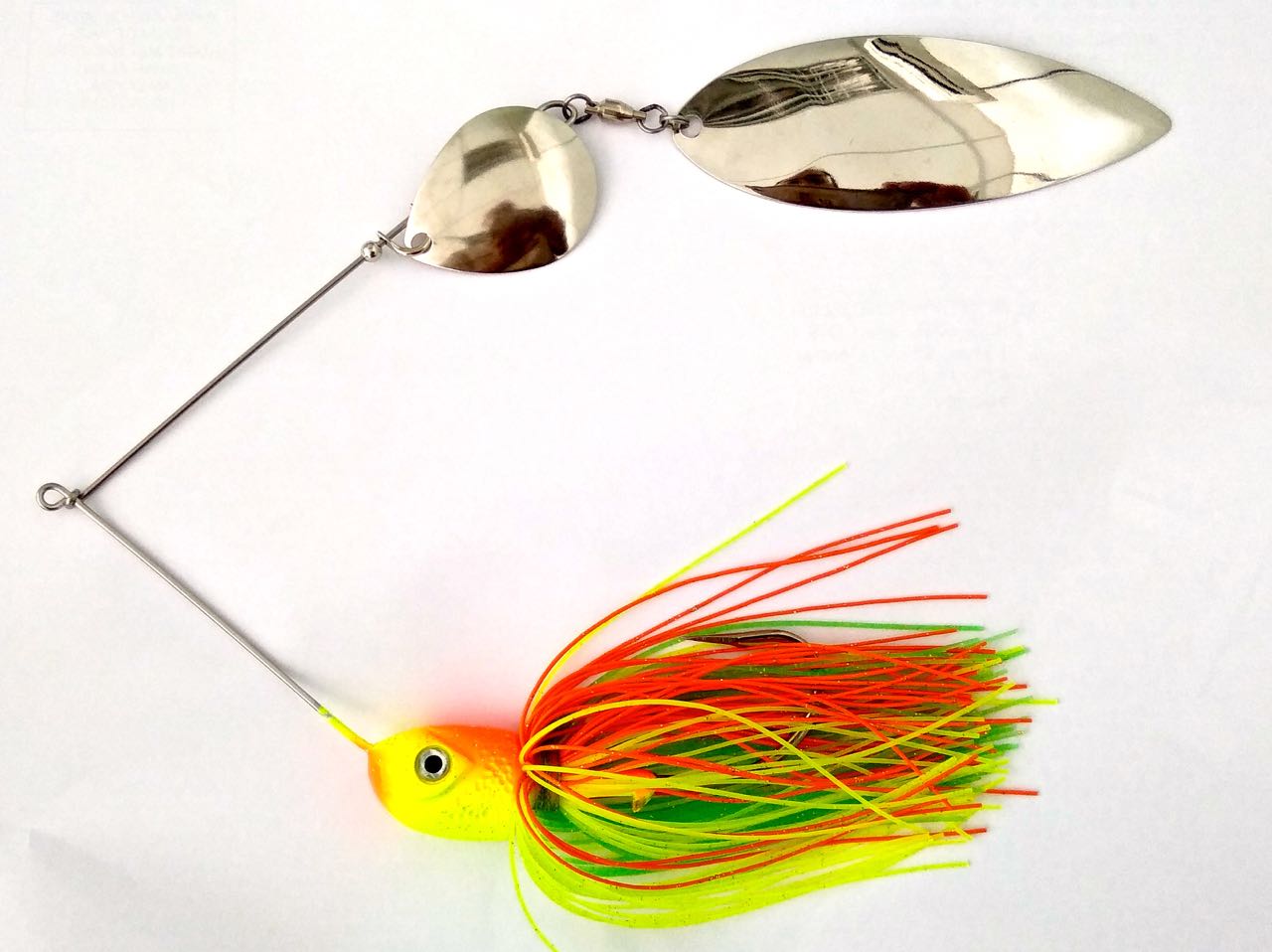
Spinnerbaits in Depth
Part
1 - The Head designs
By Christopher S.G. Tan
Let
us examine the spinnerbait head. The weight of the weighted
head to some extent will determine the depth the spinnerbait
runs at. Therefore a very heavy head will keep the spinnerbait
running deep and a light head will be good for skimming over
shallow weed beds. However the weight of the head needs to
balance with the blade used.
Too light a spinnerbait head and an oversized spinner blade will cause the spinnerbait to roll round and round during the retrieve instead of tracking steadily upright. To prevent the spinnerbait from rotating laterally, the speed of the retrieve would need to be slowed down.
There
are a few ways of reducing this rotation around the tow point.
If the angle between the two wire arms is too open, bend them
to a smaller angle, bringing the spinner and the head/skirt
closer to each other. You will find that you can increase the
retrieve speed a little. Often after hooking up a fish, both
the arms may have been opened a little and this accounts for
the change in behaviour of the spinnerbait. Bending back the
two arms to the correct angle will solve this change in
behaviour.
Some spinnerbaits are designed for a deep retrieve and have very heavy heads. They cast like a bomb and sink fast and stay deep on the retrieve. They can be cranked in fast and will still track steadily upright. The downside to the heavy head spinnerbaits is that they are not good for working shallow areas or to manipulate through snaggy areas as they may quickly snag on the drop.

A very heavy spinnerbait as seen by the larger than normal weighted head. This is probably a 20gm spinnerbait.
Ever wonder why the heads of the spinnerbait can be found in many different shapes? There are those that are shaped like a bullet, and then there are those with a very flat vertical profile. On the other extreme, there are those with bulbous jig heads. Then there are those with a wide flat base, when looked from the front, they may look a little triangular.
The spinnerbaits heads that have a streamlined shape: the bullet heads and the flat thin heads, give less resistance and allow the weighted head to counteract the lifting drag created by the revolving blades. Thus these head shapes can take a fast crank when paired with the correct blade size and shape.
Additionally,
the flat thin heads are suitable for retrieving among the
weeds as the flat thin profile heads slip through the weeds
easily. When the head tracks straight and steadily, the hook
point is less likely to catch the weeds. Whereas a more
bulbous head design, when pulled through weeds, catches the
strands more easily, especially when it is pushed sided to
side as it “bumps” or “knocks” the strands. This side-to-side
movement makes it easier for the hooks and spinner-blade to be
entangled in the weed.
The
spinnerbait heads with a wide head-on profile have an inherent
property of bouncing off the side hard objects as they are
slipped past rocks or wood. Wide head spinnerbaits are suited
for working along structural laden areas. In theory, by
getting deflected off the structure, the hook point gets
pushed away from the snag. However in very thick snags, they
may actually get “bounced” into another snag and get hooked
during the retrieve.

A very broad head spinnerbait, supposedly good for bouncing
the hook away from structure.
Those broad bodied profiles that are broader at the bottom and narrower at the top are designed to give stability and prevent it from rolling to the side. Having the bulbous body helps it deflect off structures. This sudden movement can trigger strikes. I have been told that those with a wide flat base allow the spinnerbait to be slowly retrieved along the bottom and even allows it to stop at rest without falling over.

A broad head, with a flat bottom. It can actually sit upright on its own.
There you go, that is a simple overview of why there are spinnerbait heads of different shapes and profiles. Some are better for speed retrieves and searching deep waters or working in currents. Weedy areas require different head shapes than hard structures. Take a moment before selecting a spinnerbait to decide which head design is best suited for the water to be fished.
Part 2 - The blade types and combinations

Conservation


We need to protect and conserve our resources by practising catch and release of our sportfish and protecting the habitat of our fishes.






